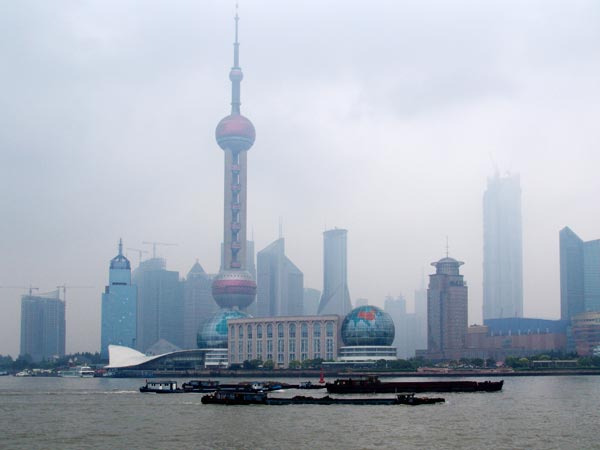
Shanghai - Day 1

It was a rainy day, but the Shanghai skyline is still impressive. This is the
skyline seen from the Bund, a park-like strip along the Huang Pu river that runs
through Shanghai. The tall structure with the two red spheres is the TV tower.
The Jin Mao Tower is the tall building in the background on the right; at 88
stories it is the tallest building in China. In the last 20 years more than
3,000 buildings over 20 stories have been built. Our guides referred to
Shanghai as the "New York City of China". We were told that the
population of Shanghai is 19 million and the urban population is 7 million; it
seems that the municipality boundaries extend beyond the urban area. We were
also told that, at any time, there are about 2 million visitors (tourists,
business travelers, etc.) in Shanghai.
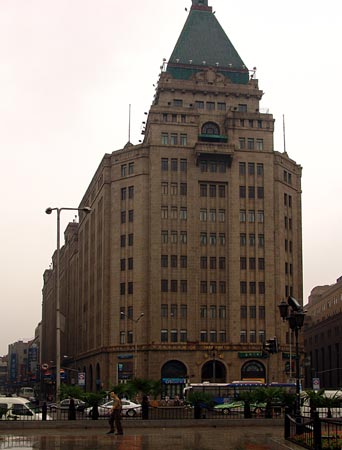
The historic Peace Hotel; it was closed for renovation so we couldn't go inside.
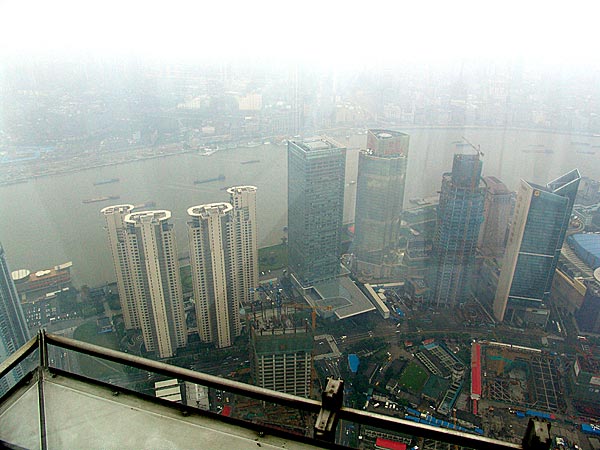
Shanghai, as seen from the observation deck at the top of the
Jin Mao Tower. The elevator took us from the ground level to the 88th floor in
45 seconds. It was very smooth - with little sense of acceleration, except for
the rapid change in air pressure affecting our ears.
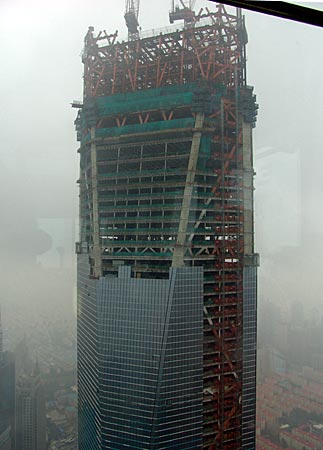
A building even taller than the Jin Mao Tower is going up right
next to it. It is to be a financial center and will have 102 floors.
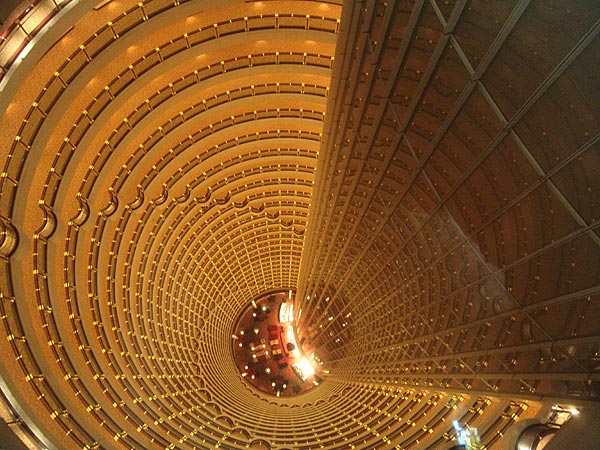
The Hyatt Hotel occupies the 53 third through the 87th floor of
the Jin Mao tower. This is the view of the atrium as seen from the 88th floor;
the lobby is 35 floors below us.
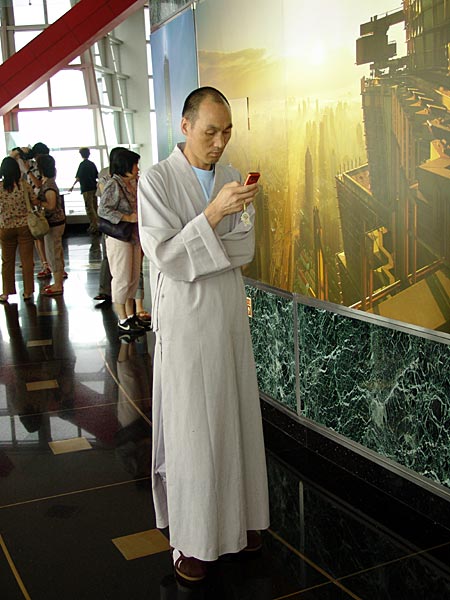
Visiting the observation deck of the Jin Mao Tower and checking
his cell phone was this Buddhist monk. To me this picture captures the contrasts
that China shows.
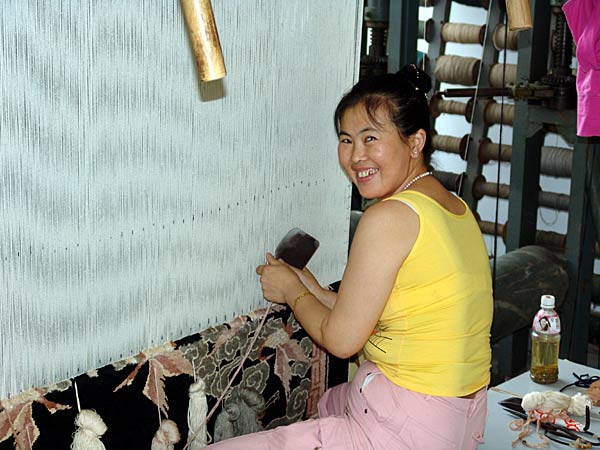
Our next stop was a factory for silk carpets. This young woman
working on a carpet seemed especially friendly and amused that we wanted to take
her picture.
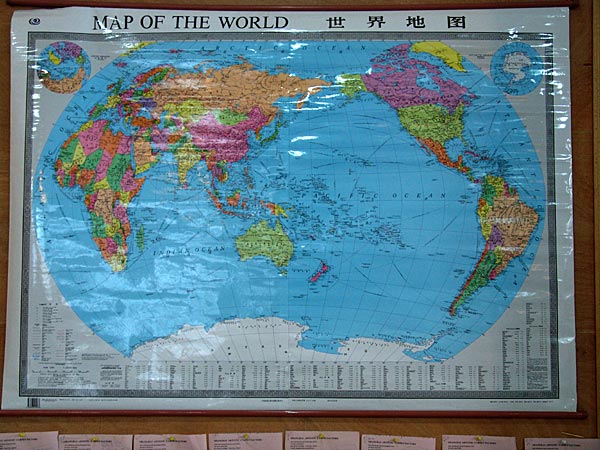
A map on the wall in the silk carpet factory. I find it
interesting that it puts China in the middle and North America on the far right
side. Our maps typically show the North America in the middle and Asia on the
far left side. Each culture thinks of itself as in the middle and the others on
the fringe.
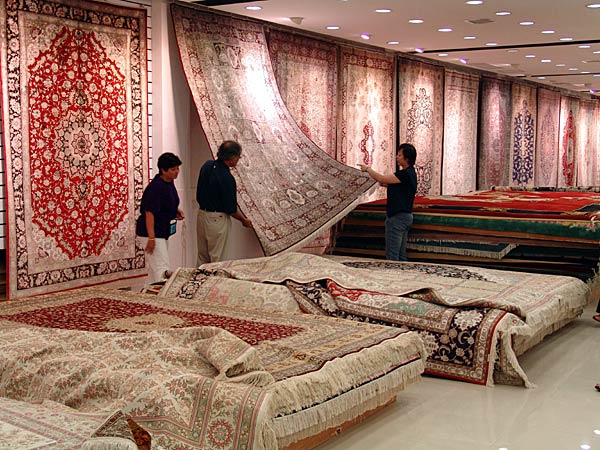
Like all other factories we have seen, they have a salesroom
where the tourists can contribute to the local economy. Aleem and Shakila are
looking at the carpets.
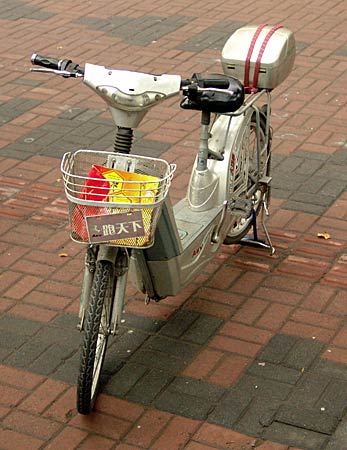
These electric bicycles seem to be an especially practical way
for the Chinese to get around the city. You plug it in at night to recharge the
battery.
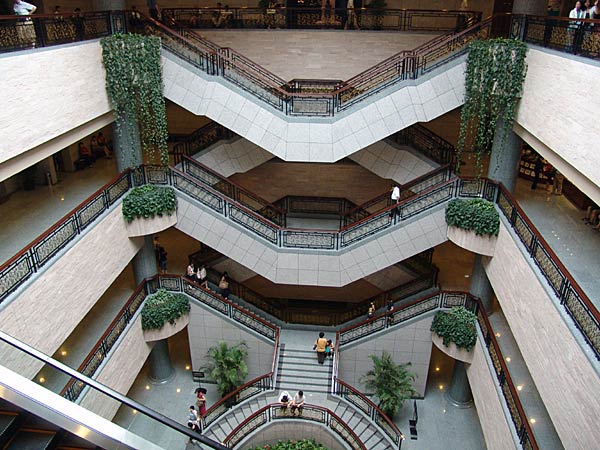
The Shanghai Museum has a new and very modern building. The
collection was also very impressive. I especially enjoyed the jade collection
showing how jade carvings have evolved over the last 5,000 years, becoming more
intricate as carving tools developed.
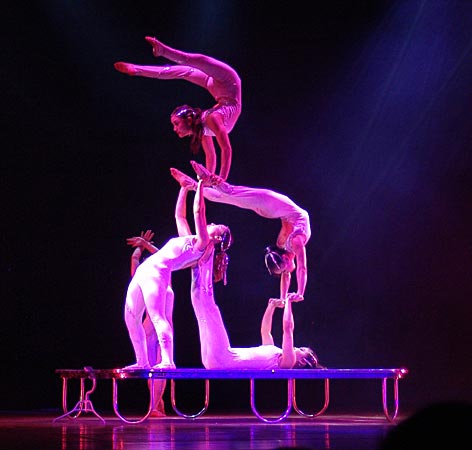
We attended an acrobatic show and ran into Linda and Bob who
were also there. They are on a separate tour of China. We will meet up with them
in a couple of days and go to Nanjing with them and Judy Sutterlin.

The acrobatic show was really very good, but not quite what I
expected. It was more like a circus.
The final performance of the show was a motorcycle act; a performer drove his motorcycle inside a spherical steel cage (about 25 feet in diameter) including across the top so that he is upside down. Then they added more motorcycles and drivers, one at a time, until there were five motorcycles zooming around inside this cage at the same time. How they kept from running into each other is beyond me.
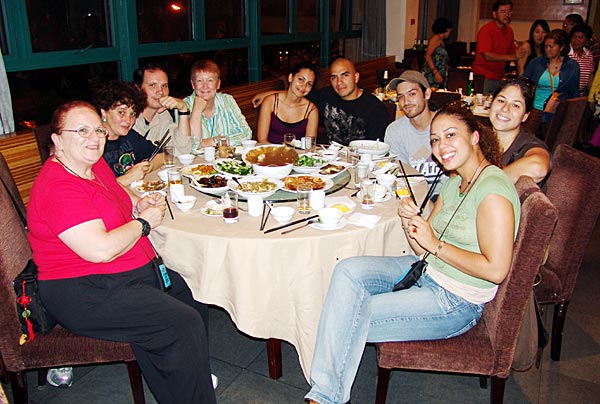
Today was the last day for our touring with China Spree. Tomorrow is a free day and then we meet up with Judy to go to Nanjing and start working with the Amity Foundation. So we said good bye to our new friends who have been touring China with us. We wish everyone a safe trip home!
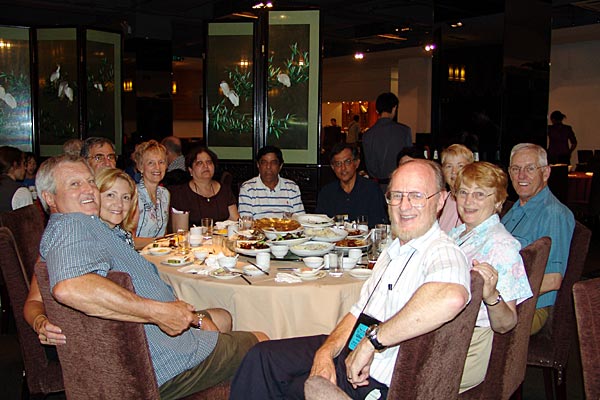
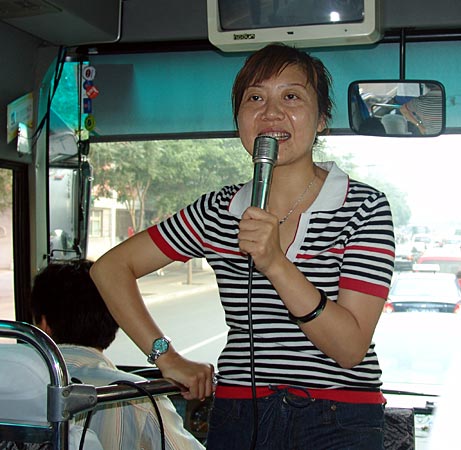
A special thanks to Helen, our "national guide". She met us at the airport in Beijing and traveled with us for the entire trip, taking car of hotel arrangements, meals, etc. She also helped with individual problems, such as connecting with our Chinese friends in Beijing, and with Vern's cell phone problem. She also taught us some Chinese phrases. The most appropriate phrase describing our tour is, "Ding Ding Ding Ding How!" (I don't know how it is spelled, but that is what it sounds like), which translates to "Very, very, very, very good!".